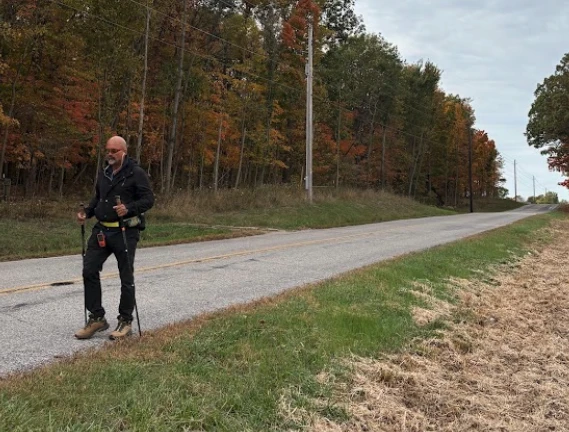

Father Gary Graf walks down a rural road during his trek across America in support of immigrants on Friday, Oct. 17, 2025. / Credit: Photo courtesy of Father Gary Graf
CNA Staff, Nov 24, 2025 / 06:00 am (CNA).
After a month and a half of walking an average of 17 miles a day, 67-year-old Father Gary Graf said he is starting to get “a little pain in one shin,” but his broken ribs are “getting much better.”
On Oct. 6, Graf, a Catholic priest from Chicago, began a journey on foot from Pope Leo XIV’s childhood home in Dolton, Illinois, to New York City to bring attention to the plight of immigrants amid the sometimes “inhumane” ways the Trump administration is treating them during its immigration enforcement actions.
He hopes to arrive at the Statue of Liberty on Ellis Island, where his own great-grandparents entered the country as immigrants, by Dec. 2.

A few weeks ago, when visiting a parish in Indiana, he was invited to ride a horse. He fell off as it galloped and broke several ribs, which led him to take one day off to recover. That day, friends walked in his stead.
Graf, the pastor of the mostly Hispanic Our Lady of the Heights Catholic Church in Chicago Heights and a longtime member of Priests for Justice for Immigrants, has committed his life to helping immigrants. Ordained in 1984, he spent five years as a priest in Mexico serving a people “with whom I fell deeply in love.”
He told CNA that after initially feeling helpless watching the raids taking place against his beloved community in his hometown of Chicago, he “felt a call that was directly from above” to start walking.

Within weeks, he was on the road. He first spoke to an old friend about his idea, who immediately connected him with Lauren Foley, the head of a public relations firm. She “immediately embraced the idea,” and between her help and that of some “young people who understand social media,” a website as well as social media accounts were set up to chronicle his journey and to share the stories of immigrant families.
Of the immigrants on whose behalf he is walking, Graf said: “I look to help people who get up every single morning to work and raise their families. If I can do this small gesture on their behalf, what a blessing it is, what a privilege.”
Asked about the most profound insight he has gained thus far, Graf said his long days walking through the wide expanse of rural America have helped him understand better the ways of people who did not grow up in a multicultural city like he did.
“We have to reverently appreciate and try to connect with those whose lives we’re passing through,” he said.
As he has spoken with people in diners along his path, Graf has developed “a greater sensitivity,” discovering that “there’s not a lot of animosity against the immigrant.”
Many of the people he has met simply do not know any, he said.
Along the way, he has also experienced unity with Christians from other denominations, as well as with those without religious faith, who all care about the humane treatment of human beings.
“I have seen so much goodness,” he said. “This has brought so many of us together: people from many different faith traditions, or none. This is an opportunity given to us.”
During his quiet walks through rural farmland, he has marveled at the amount of labor it took to build the many roads, bridges, and overpasses he has seen.
“I’m sure the hands of many immigrants helped build these things,” he reflected.
Graf said he is delighted that both the U.S. Conference of Catholic Bishops and Pope Leo XIV addressed the immigration enforcement situation in the past week.
The U.S. bishops issued a special message during its Fall Plenary Assembly two weeks ago, calling for “a meaningful reform of our nation’s immigration laws and procedures.” The bishops argued that “human dignity and national security are not in conflict. Both are possible if people of goodwill work together.”
The pope echoed the bishops’ message. On Nov. 18, he acknowledged to reporters that “every country has a right to determine who and how and when people enter.”
“But when people are living good lives, and many of them for 10, 15, 20 years, to treat them in a way that is extremely disrespectful, to say the least — and there’s been some violence, unfortunately — I think that the bishops have been very clear in what they said.”
“I think that I would just invite all people in the United States to listen to them,” the pope said.
“Both the pope and the bishops used the word ‘indiscriminate’ to talk about the way people are being singled out and aggressively having their wrists zip-tied behind their backs as their faces are pushed to the ground in front of their children,” Graf said.
“It is indeed indiscriminate. This reflects dishonesty on the administration’s part,” he said. “They said they were going after the ‘worst of the worst,’ criminals, but this isn’t the case, at least in Chicago. They’re grabbing people first and asking questions later.”
“The violent way many of these people are being treated is amoral and un-American,” he said.
Like the pope and the American bishops, Graf said he hopes the federal government will establish a more humane immigration system that respects the dignity of immigrants as well as the rule of law and the country’s right to regulate its borders.
“I am not a politician,” he said. “My job is to mediate, to speak up, in God’s name, in the united name of the Church. But can we look for a way for those who are fulfilling their responsibilities; for them to one day receive the rights of citizens?”
The priest, who appeared on “EWTN News Nightly” in October, said he has been “impressed by the media” and is grateful his message is being spread.
“If we don’t hear the whole truth, the incredible ignorance and darkness we live in can paralyze us, and keep us from doing what we ought to do,” he said.
Read More







![Bishops discuss faith formation before National Catholic Youth Conference #Catholic
Organizers of Pope Leo XIV’s upcoming digital dialogue with young people Nov. 21 at the National Catholic Youth Conference in Indianapolis speak to the media at the site of the United States Catholic Bishops’ Conference Fall Plenary Assembly in Baltimore on Nov. 12, 2025. Left to right: Cardinal Christophe Pierre, papal nuncio to the United States; Montse Alvarado, president and COO of EWTN News; Archbishop Nelson J. Pérez, Archdiocese of Philadelphia; Christina Lamas, executive director of National Federation for Catholic Youth Ministry; and Archbishop Charles Thompson, Archdiocese of Indianapolis. / Credit: Shannon Mullen/National Catholic Register
Baltimore, Maryland, Nov 17, 2025 / 07:00 am (CNA).
Bishops discussed young Catholics’ place in the Church ahead of the National Catholic Youth Conference.At the United States Conference of Catholic Bishops’ (USCCB) Fall Plenary Assembly in Baltimore, bishops spoke about the young generation as many prepare to attend NCYC. The conference will take place Nov. 20–22 in Indianapolis for prayer, community, evangelization, and service among Catholic teenagers.During NCYC, Pope Leo XIV will hold a digital dialogue with teens from across the nation. “When the pope speaks, he speaks to the world, and this will be a wonderful, wonderful moment. This encounter will engage young people in real time,” said Archbishop Nelson Pérez of Philadelphia. At a Nov. 12 press conference at the USCCB fall plenary, Pérez said “there is a deep significance to this encounter.” He added: “It reflects the Holy Father’s desire to connect with young people, with our youth, whom his predecessor … Pope Francis, called ‘the now of God.’”Pérez said during his time as a priest and bishop, he has noticed teenagers “want a place in the Church.” He said: “They want to be seen, heard, and valued, which is so beautiful ... They want to be loved by the Church.”“Even in today’s interconnected world, the Church can seem far away from young people. The Holy Father’s choice to encounter the American youth ... is an expression of his closeness to the youth of the world.”“This moment will mark a powerful opportunity for young people to witness the beauty of the universal Church with our Holy Father and to express their concerns, voices, experience, [and] what’s in their hearts,” Pérez said.Bishop Joseph Espaillat, auxiliary bishop for the Archdiocese of New York, has attended NCYC more than a dozen times. He told CNA “the energy and the vibrancy of the young people” is why he returns each year.“It’s not just the local parish or the local diocese, but it’s the national Church and there’s something powerful when we come together,” Espaillat said.This year’s event is “the first time ever the Holy Father has a live online interview like this,” at NCYC, Espaillat said. “What I love about it is that the Church in the United States is leading right now. The young people being the focus with our Holy Father is going to be great, and it’s going to produce a lot of positive energy in our Church.”Espaillat encouraged attendees “to be open and allow yourself to be surprised by the Holy Spirit.” He added: “Don’t go in with a preconceived notion. It is a great event in which there are many, many fruits. I’ve seen young people just come to life at the event.”Youth draw closer to the ChurchAs thousands of teenagers plan to gather at the national conference, U.S. bishops further explained why so many young Catholics are looking to the Church. A number of bishops highlighted the Catholic presence on social media is helping to draw them in.Bishop William Byrne of Springfield, Massachusetts, told CNA the exponential growth of young Catholics coming to the Church is “amazing and exciting.” Byrne, who served as chair for the USCCB’s committee on communications, detailed how much its online presence has grown its outreach to the young generation and wider population. “Beginning with the illness of our beloved Pope Francis, through the funeral, and then the transition to Pope Leo, we’ve actually had a 226% growth in our social media on the four platforms we use — TikTok, Instagram, X, and YouTube,” he said.“The amazing thing is, it’s still growing. It means that people are seeing it, sharing it,” Byrne said. He specifically noted it’s the “young people” spreading the message online. “So we see that we are reaching people,” Byrne said. “But our goal is not to get people locked on their phones. Our goal is to get people locked on Jesus Christ and have the impression be Jesus Christ and his bride, the Church.”“This is an exciting time. It’s not without its challenges, but it’s also a wonderful opportunity,” Byrne said. “We’re reaching young people who are curious and hungry. It’s so exciting to see the Church continue to speak to the world, because the Church has never lost her relevance.”The start of the Catholic online presence followed the movement of the new atheists, Bishop Robert Barron of Winona-Rochester, Minnesota, said. He told CNA the movement was made up of “people who were really shaping the culture, saying: ‘There’s no purpose of life. We come from nowhere. We go nowhere. There’s no objective moral value.’”“A lot of people, myself included, began to get on social media with a religious voice,” Barron said. “People who had not heard a religious voice or who were disaffiliated … could find people like me and many others who were actually talking about God and about religion.”“But I think as a whole generation came of age, they realized what a desperately sad and empty message that is,” Barron said. “There’s this hunger in the heart for God, and so that just reasserts itself. I think a lot of younger people who were raised on this very vapid philosophy began to look to religion.”As more young Catholics get involved in youth formation whether in their parishes or at larger gatherings like NCYC, Barron said he encourages them to use the opportunities to “build community and build a sense of family with other believers.”Barron, who is the founder of the Catholic media organization Word on Fire, has gained nearly 3 million YouTube subscribers and millions of other followers across social media platforms. But, he said, “one drawback of social media is that it’s a little private world. It can be a lot of people accessing it, but privately.”“Maybe through social media an individual finds a path to religion, but then to look around a room and see thousands of other people that are on a similar path — that’s a great thing,” Barron said.](https://unitedyam.com/wp-content/uploads/2025/11/bishops-discuss-faith-formation-before-national-catholic-youth-conference-catholic-organizers-of-pope-leo-xivs-upcoming-digital-dialogue-with-young-people-nov-21-at-the-national-catholi.webp)

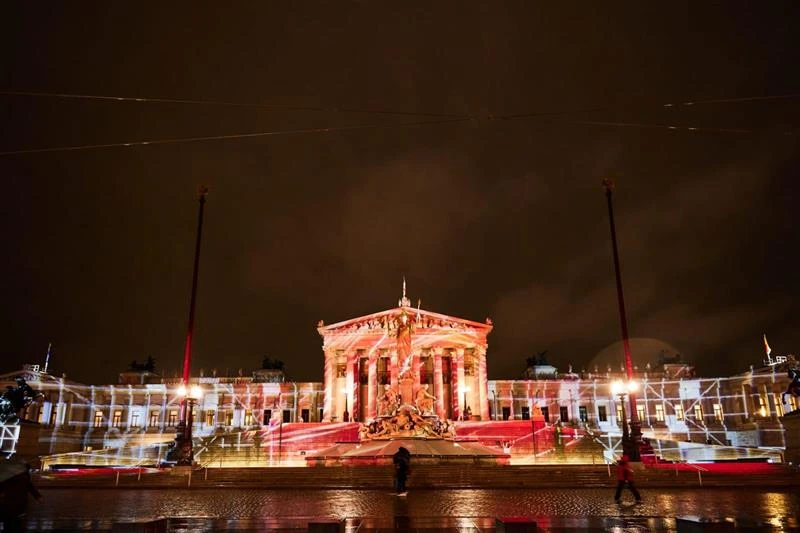

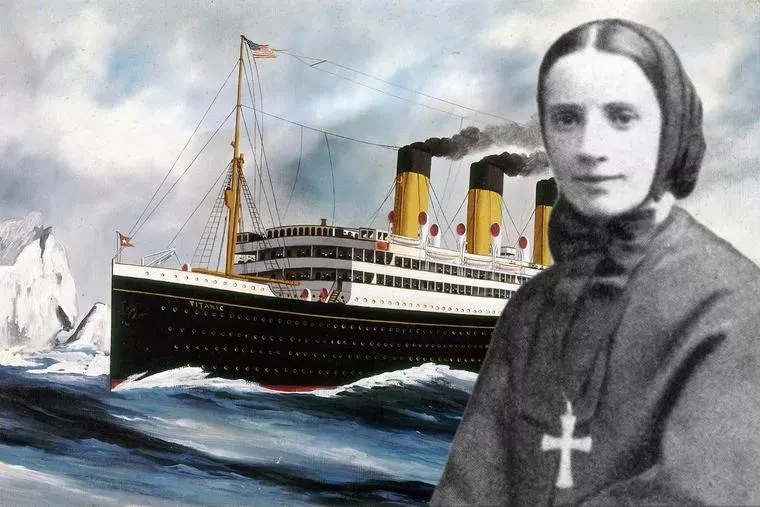

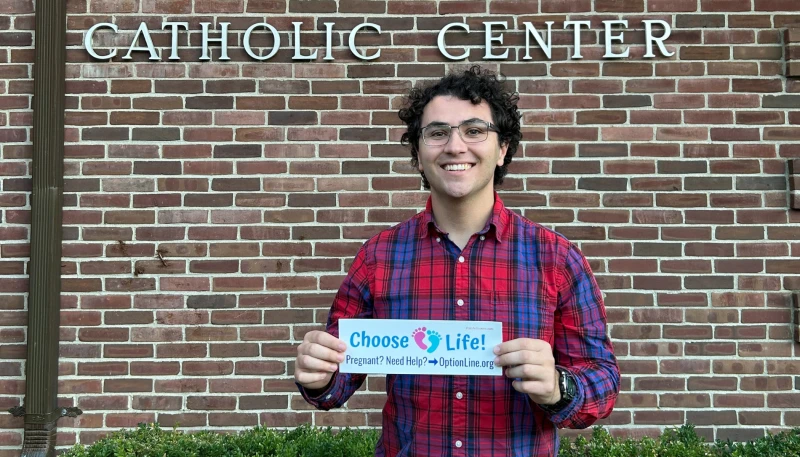




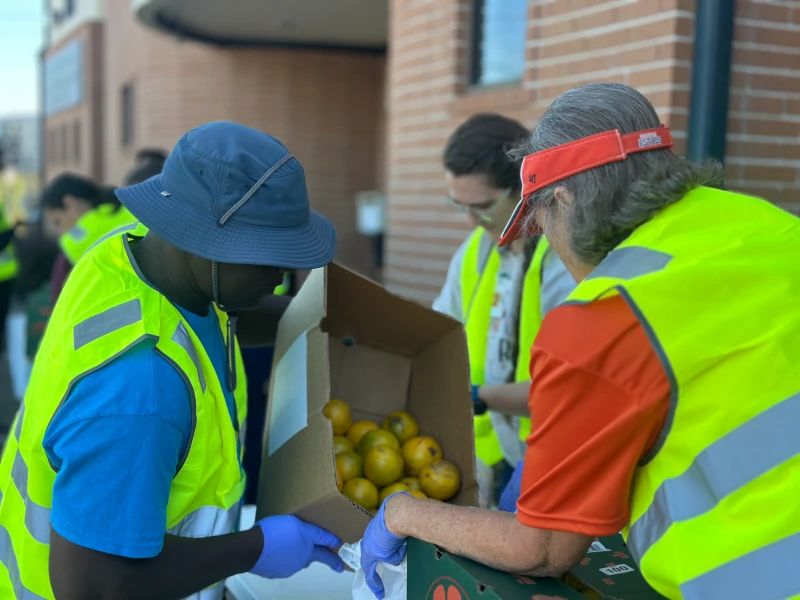


![10,000 pro-lifers join LIFE Runners annual relay across the U.S. #Catholic
Finish line of the A-Cross America Relay, hosted by Benedictine College in Atchison, Kansas. / Credit: Photo courtesy of LIFE Runners.
CNA Staff, Nov 1, 2025 / 05:55 am (CNA).
A pro-life relay with more than 10,000 participants came to a joyful conclusion in Kansas last Saturday after runners made the shape of a cross as they ran across the U.S.The 5,124 mile “A-Cross America Relay,” organized by pro-life group LIFE Runners, kicked off in September in four cities around the country and ended at Benedictine College in Atchison, Kansas on Oct. 25.The starting points were San Francisco, California; New York City, New York; Austin, Texas; and Fargo, North Dakota, but participants around the world also joined to witness to life in their own nations. The San Francisco kickoff of the A-Cross America Relay began at Star of the Sea Church with students from Stella Maris Academy. Credit: Photo courtesy of LIFE Runners.With more than 25,000 “teammates” in nearly 4,000 cities across 50 countries, LIFE Runners aim to raise awareness for unborn children during their annual relay. Patrick Castle, president and founder of LIFE Runners, spoke with CNA about what inspires participants to run for the unborn. CNA: What inspires the mission of LIFE Runners? Castle: LIFE Runners is inspired by the obvious responsibility of Christians to reach the youth, pregnant mothers, fathers, and influencers with God's love and the truth that abortion isn't a solution to anything, it is the greatest problem, the greatest evil by definition, by the numbers. Abortion claims more American lives in one year than all combat casualties in the history of America. With the 250th anniversary of our country next year, may we reflect on who we are as Americans and as Christians. We are people who stand for God and His gifts of life and liberty. Amen!How does the relay help raise awareness for the unborn?Castle: The LIFE Runners A-Cross America Relay helps raise awareness for the unborn through our public witness [of] wearing “REMEMBER The Unborn” shirts. Eighty-two percent of post-abortion mothers said if they had encountered one supportive person or encouraging message, they would have chosen life. For example, two mothers saw our “REMEMBER The Unborn” witness outside of the Omaha Planned Parenthood, asked for help, and chose life. New York City kickoff for the A-Cross America Relay. Participants prayed and then walked with the big “REMEMBER The Unborn” banner to the Father Francis Duffy statue in Times Square. Credit: Photo courtesy of LIFE Runners.Thousands of people witnessed thousands of LIFE Runners wearing "REMEMBER The Unborn" shirts across America and around the world during the 5,124 mile relay that made a cross over America. With access to abortion in the mail and across state lines, LIFE Runners wear life-saving messages everywhere to inspire a culture of life at work, school, walking, running, grocery store; everywhere! What stood out to you from the finish line relay at Benedictine College in Atchison, Kansas? Castle: I am so encouraged by the authentic, Catholic, pro-life identity of Benedictine College … While running up the hill, students invited other students to join us, like a scene out of the "Rocky" movie when the local community joined him on a training run. The last mile ended on the main campus drive with President [Stephen] Minnis leading a large crowd with cheering. The finish was immediately followed by a beautiful prayer from Archbishop [Joseph]Naumann.What is the significance of having a national relay across the United States? Castle: The significance of having a relay that makes a cross over America is unity. [The relay] connects everyone in a pro-God way, allowing faith and light to overcome the darkness to end abortion — all in Christ for pro-life! Teammates in other countries adopt segments, knowing that America can and should lead the way in ending abortion around the world. The relay is an inspiring light for the world. The cross is the greatest symbol of love, bringing hope that life will prevail!The North arm kickoff of the A-Cross America Relay in Fargo, North Dakota. NDSU Newman Center students helped launch the north arm with a 2.7 mile prayerful witness walk. Credit: Photo courtesy of LIFE Runners.](https://unitedyam.com/wp-content/uploads/2025/11/10000-pro-lifers-join-life-runners-annual-relay-across-the-u-s-catholic-finish-line-of-the-a-cross-america-relay-hosted-by-benedictine-college-in-atchison-kansas-credit-photo-courtesy-of.webp)




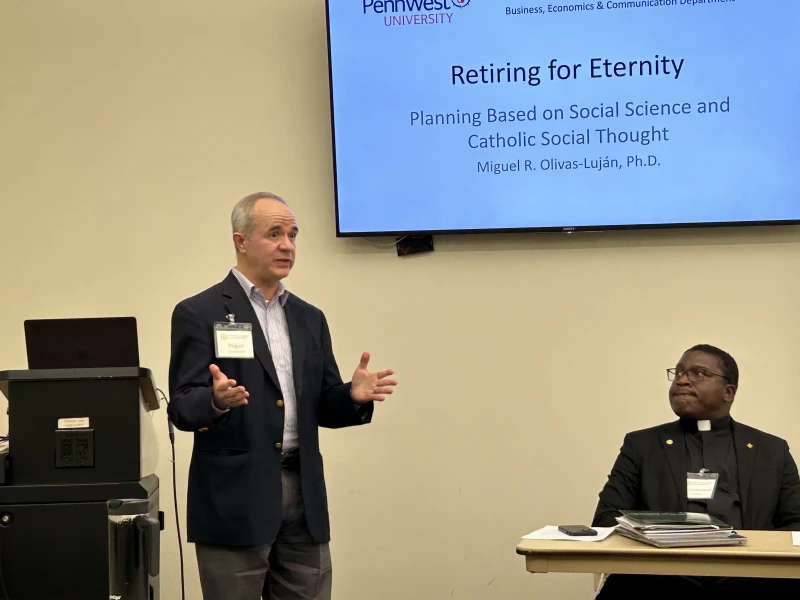




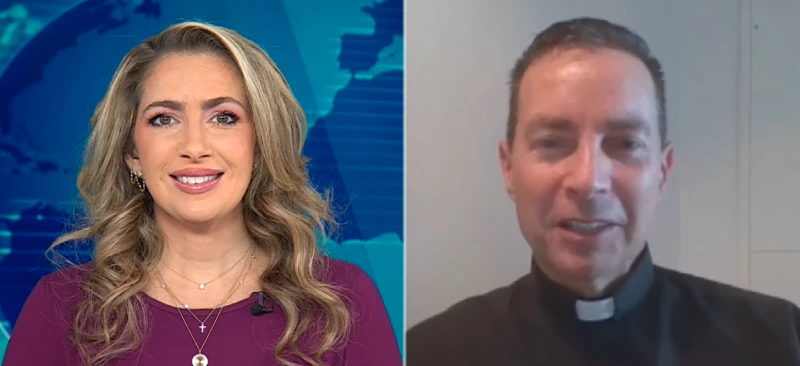

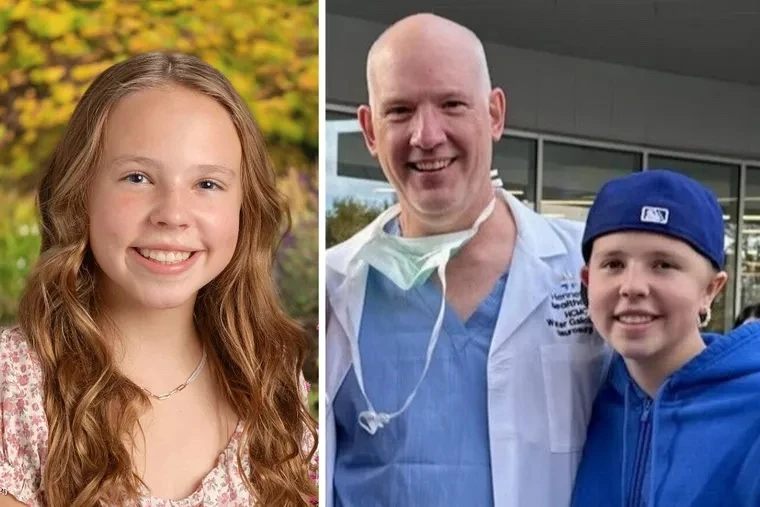



![Bill proposed in Hungary could require priests to violate seal of confession #Catholic
null / Credit: AS photo studio/Shutterstock
Washington, D.C. Newsroom, Oct 24, 2025 / 06:00 am (CNA).
Here is a roundup of Catholic world news from the past week that you might have missed:Bill proposed in Hungary could require priests to violate seal of confessionThe Permanent Council of the Hungarian Catholic Bishops’ Conference has expressed shock over the proposition of a bill that would require Catholic priests to violate the seal of confession. “This is in serious conflict with the agreement between the Republic of Hungary and the Holy See of Feb. 9, 1990, which states that the Catholic Church in our county operates on the basis of [canon law],” the council stated in an Oct. 17 press release. The council expressed regret over “extremely crude” and “baseless sentiment-mongering and slander” that has occurred during the ongoing election cycle. “We emphasize to our priests, all believers, and society that we are not a political organization, we do not wish to participate in the campaign,” it stated. “Our mission is to serve the salvation of souls.” Church in South Korea pledges help for Timorese migrants The Catholic Church in South Korea has pledged to help improve the situation for migrants from the small Catholic-majority island country of Timor-Leste.During an Oct. 11–15 visit to the island, a 12-member delegation of South Korean Catholics from the Committee for Pastoral Care for Migrants of the Catholic Bishops’ Conference of Korea visited with groups that send migrant workers to South Korea, Cardinal Virgílio do Carmo da Silva, as well as President José Ramos-Horta and Prime Minister Xanana Gusmão, according to UCA News. The delegation pledged to help bring about “better protection and welfare of migrant communities” and to “improve better pastoral care program[s] for Timor-Leste migrants,” of which there are approximately 7,000 living in South Korea.Australian archbishop renews commitment to safeguarding childrenArchbishop Tony Ireland of Hobart in Tasmania, Australia, has reaffirmed his commitment to ensuring all Catholic communities and workplaces throughout his diocese uphold safe environment standards. “The safety and well-being of all who engage with the Church is foremost in my mind and heart,” the archbishop said in an Oct. 17 statement. “Ensuring that every person — regardless of age or circumstance — feels safe, valued, and respected is an essential part of our mission and witness.” On behalf of his archdiocese, Ireland endorsed the National Catholic Safeguarding Standards, stating: “Our commitment to these standards is unwavering, reflecting zero tolerance of any form of abuse, neglect, or exploitation.” The archdiocese has remained engaged in its safeguarding measures since 2017. Madagascar cardinal urges international community to refrain from sanctioning country Cardinal Désiré Tsarahazana of Toamasina, Madagascar, is appealing to the international community not to sanction Madagascar in wake of a coup staged by military-backed youth protesters. The cardinal told Vatican media that imposing sanctions “would be illogical and immoral.”“Supporting young people who demand a better life and then killing them with sanctions would make no sense,” Vatican News Italy reported. Religious conversion case against Christian university officials in India droppedThe Supreme Court of India has dropped a criminal case against three Christian university officials in Uttar Pradesh who were accused of violating the state’s stringent anti-conversion laws. The court dropped the case on Oct. 17, citing “legal defect” in the allegations filed by Himanshu Dixit, vice president of the World Hindu Council, according to UCA News. The Hindu leader had accused officials from the Presbyterian Sam Higginbottom University of Agriculture, Technology, and Sciences of “unlawful conversion activities” in addition to “cheating, criminal intimidation, and forgery,” according to the report.The judges noted that under Uttar Pradesh law, only an “aggrieved” person — that is, a victim or close relative — of the violation is permitted to lodge a complaint. The court declined to dismiss charges related to cheating and forgery but ordered protection of the accused from arrest.Church in Mozambique proposes political guide for dialogueThe Episcopol Justice and Peace Commission in Mozambique has proposed a document outlining “concrete proposals for reforms of the state, the electoral system, natural resource policies, economic inclusion, and national reconciliation.”The document, “A Political Guide for National Dialogue,” proposes limited power for the president in appointing heads of state, that judges be elected among their peers, and that the position of secretary of state be eliminated in provinces for the sake of the country’s budget, according to an Oct. 20 report from Vatican News. The guide also recommends the elimination of electronic voting to combat fraud as well as economic and natural resource reforms. To address the county’s unrest, the document proposes “building a collective memory based on truth, exercising forgiveness and mutual listening, promoting a culture of dialogue and trust, and changing mentalities to value differences while combatting prejudices.”Latin American bishops host ‘virtual jubilee’ for Indigenous people The Episcopal Conference of Latin America hosted a virtual jubilee event for Indigenous people of Latin America and the Caribbean on Oct. 14–16. Organized by the Advisory Team on Indian Theology, together with the Pastoral Care of Indigenous People of the Latin American and Caribbean Episcopal Council and the Latin American Ecumenical Articulation of Indigenous Pastoral Care, the event centered on sharing experiences “as pilgrims of hope together with our Indigenous people, authentic custodians of culture, and our common home,” according to a message from Cardinal Michael Czerny, SJ, prefect of the dicastery for promoting integral human development.“Your love for the earth, your respect for the elderly, your sense of community, and your ability to live in harmony with creation are a gift to the whole Church. You teach that life is best understood when lived simply, in relationship with God, with nature, and with others,” he said.](https://unitedyam.com/wp-content/uploads/2025/10/bill-proposed-in-hungary-could-require-priests-to-violate-seal-of-confession-catholic-null-credit-as-photo-studio-shutterstockwashington-d-c-newsroom-oct-24-2025-0600-am-cna-here-i.webp)

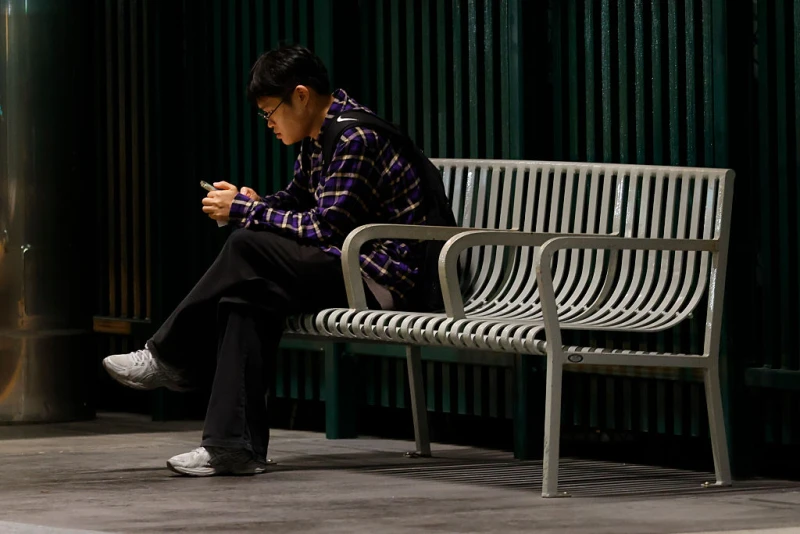







![Israelis, Gazan Christians, Catholics in U.S. weigh in on historic peace deal #Catholic
Daniel Ayalon, former Israeli ambassador to the U.S. and former foreign policy adviser to Prime Minister Benjamin Netanyahu, speaks with “EWTN News Nightly” anchor Veronica Dudo on Oct. 10, 2025. / Credit: “EWTN News Nightly”
Washington, D.C. Newsroom, Oct 11, 2025 / 08:00 am (CNA).
Former Israeli government officials, representatives for the Latin Patriarchate of Jerusalem, and Catholic advocates for Israel in the U.S. spoke with EWTN News this week following the historic peace deal brokered by the Trump administration between Israel and Hamas. News of the peace agreement came as “a joy for the entire population of Gaza, for the families of the hostages, and for our parish, our little parish there in Gaza,” according to Farid Jabran, the public and government affairs adviser for the Latin Patriarchate of Jerusalem.In an Oct. 10 interview with “EWTN News Nightly,” Jabran noted there is still an air of “expectation” as the region waits to “see what happens.”Jabran revealed that Latin Patriarch Cardinal Pierbattista Pizzaballa had spoken to the pastor of Gaza’s only Catholic Church, Father Gabriel Romanelli. “They are all very happy that they are not hearing more bombings,” Jabran said of the Gazan parish community. “They expect a better future, but still they wait to see what is going to happen … They’re all waiting to see what happens after the release of the hostages.” “The Catholic Church, as the patriarch, as the pope, as many said, will give anything in its power to to offer assistance, to offer good services when it’s asked to do so,” said Jabran, noting that the Latin Patriarchate has “big plans for Gaza,” including the construction of a new hospital in the southern region of the enclave. “We’ll have more details on that that will be supported by the Italian Conference of Catholic Bishops and the Latin Patriarchate,” he revealed, adding: “We are planning to create field hospitals in several places and to work on schools and education for the children, not only for the Christian community [but] for everyone.”Breaking down the peace deal In an Oct. 10 appearance on “EWTN News Nightly,” Daniel Ayalon, former Israeli ambassador to the U.S. and former foreign policy adviser to Prime Minister Benjamin Netanyahu, shared how the historic peace deal brokered by the Trump administration will play out in the coming days. Though both Israel and Hamas signed on to the first phase of the peace plan set out by the Trump administration on Wednesday, reports of ongoing bombardment from the IDF in northern Gaza was reported on Friday morning. Avalon explained that “there was a threat that the IDF depicted, and they had to take care of it.” “We have enough experience with Hamas that even though they agree on a ceasefire, they continue their aggression,” he told “EWTN News Nightly” anchor Veronica Dudo. “But we adhere, or Israel adheres to the agreement and to the ceasefire terms … We started right on time, and we are now back off the former position, and hopefully we will see our hostages within the next 72 hours.” President Donald Trump announced on Truth Social on Wednesday that both parties had agreed to the first phase of his 20-point peace plan for the Middle East, in which he noted: “ALL of the hostages will be released very soon, and Israel will withdraw their troops to an agreed-upon line as the first steps toward a strong, durable, and everlasting peace.”“I think that we should all acknowledge the leadership and the negotiation capabilities of President Trump and his team,” Ayalon said. “I believe that they found the right moment to really bring together an assembly of protagonists in the region that could really be instrumental, namely, Turkey, Qatar, and Egypt, that put a lot of pressure on Hamas that was not there before.” Given that the first phase goes according to plan, Ayalon said, Israel will release its Palestinian prisoners, and IDF troops will continue to withdraw, allowing Gazans to return to their homes. After which, he said, comes the precarious task of disarming Hamas, which will include dismantling its vast network of tunnels. This task, he predicted, could take several months. “I think the people of Gaza deserve this,” Ayalon reflected. “After these two horrendous years … they were actually held hostage by Hamas, which used them as cannon fodder or as human shields.” The former ambassador further expressed hope that Gazans ensure “no more terror organizations will grow there to a monstrous dimension, as we did with Hamas.”Looking ahead, Ayalon expressed hope for a broader normalization of relations between Israel and its Arab neighbors, such as Saudi Arabia and others, as well as other major Islamic countries such as Indonesia or Pakistan, to take place alongside reconstruction. He also floated the start of “a political process with the Palestinians,” noting Hamas will no longer govern the enclave. “It probably will be the Palestinian Authority,” he said, noting that under the agreement the governing body is mandated to promote peaceful coexistence and to “do away with terror” and indoctrination in its schools. “Then we can talk about real peace between Israel and the Palestinians, which may be a cornerstone of a much broader peace with the region,” he said, adding: “And we all deserve it — the world deserves it, and I think it will be to the benefit and the prosperity of all here.”Remembering Oct. 7On the two-year anniversary of the Oct. 7, 2023, Hamas attacks on Israel, Philos Catholic Director Simone Rizkallah told CNA: “This is not a day to discuss U.S. foreign policy or to analyze political dynamics.” Even with the Trump administration’s efforts in the background to make a peace deal between the Hamas terrorist group and Israel, Rizkallah emphasized, “Oct. 7 is a day to live out the beatitude ‘Blessed are they who mourn.’” Philos Catholic is an arm of the U.S-based nonprofit organization, the Philos Project, which works to foster Catholic-Jewish relations. Over 1,200 Israelis and 22 Americans were confirmed killed, and thousands more wounded in the wake of Hamas’ large-scale surprise attack on Israel. An additional 251 were taken hostage into the Gaza Strip.“We mourn with the Jewish people and with Israel as if we are mourning for our own selves — because, in truth, we are,” she said. “To stand with our Jewish brothers and sisters today is not a political act, and it is certainly not a partisan one. The Church is not a political entity. This is about faith and the culture that faith gives birth to.”According to Rizkhallah: “To speak up and stand with our Jewish friends is not sentimental — it is an act of spiritual realism and solidarity with our own people in the faith.” To do so, she continued, is not a partisan act but a “part of orthodox Catholic theology, rooted in the heart of the Church’s self-understanding.”Catholics, she urged, should “incarnate this love by showing up in the flesh” for their Jewish friends and neighbors. “Call your Jewish friends,” she said. “Reach out to your local synagogue or Jewish community center. Drop off white roses in the wake of antisemitic attacks — a symbol of Christian resistance to hatred, inspired by the White Rose movement that opposed Nazi Germany.”Philos Catholic will host an event commemorating the 60th anniversary of Nostra Aetate this year at the Saint John Paul II National Shrine in Washington, D.C., which will be available to attend both in person and virtually.](https://unitedyam.com/wp-content/uploads/2025/10/israelis-gazan-christians-catholics-in-u-s-weigh-in-on-historic-peace-deal-catholic-daniel-ayalon-former-israeli-ambassador-to-the-u-s-and-former-foreign-policy-adviser-to-prime-minister-ben.webp)






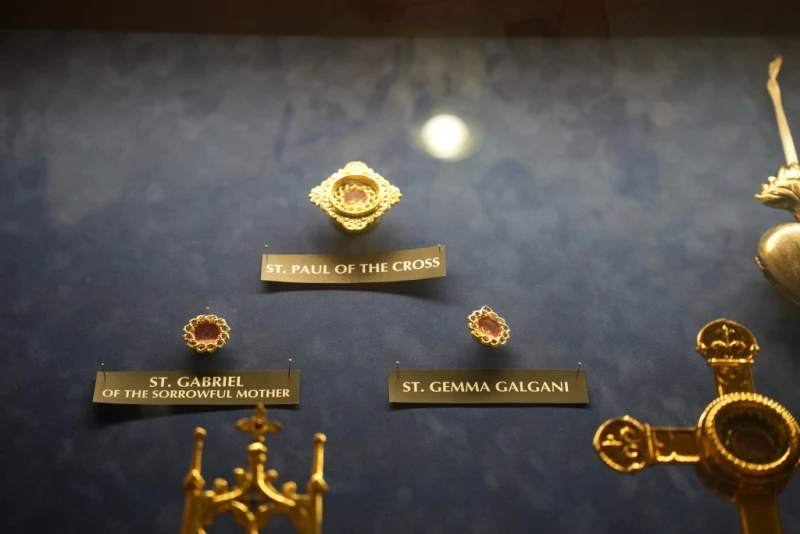


![Faith-based ministries discuss how to further pro-life mission #Catholic
Kat Talalas, Amy Ford, Christopher Bell, and Sister Maria Frassati, SV, speak at the Leading with Love Conference at The Catholic University of America in Washington, D.C., on Oct. 8, 2025. / Credit: Tessa Gervasini/CNA
Washington, D.C., Oct 9, 2025 / 12:55 pm (CNA).
Pro-life leaders from across the country gathered this week to discuss how faith-based ministries are helping to cultivate a society that promotes human dignity and how others can advance the cause.The Leading with Love Conference at The Catholic University of America (CUA) in Washington, D.C., was sponsored by the Human Life Foundation and the Center for Law and the Human Person at The Catholic University of America’s Columbus School of Law. It was aimed at “empowering Christians to cultivate a culture of life within their local communities.”Jennie Bradley Lichter, president of the March for Life Education and Defense Fund, spoke to attendees Oct. 8 about the power of faith-based ministries, including The Guadalupe Project. Lichter founded the initiative in 2022 to provide resources and encouragement to parents within the CUA community.To cultivate this encouragement, we must figure out how we can “create more of a revolution of love,” Lichter said. “Christ started this revolution of love, but it’s now up to each one of us in our particular time and place.”“Caring for unborn babies and their mothers is one of the most urgent challenges of our time, Lichter said. “Six out of 10 women who have chosen abortion would have preferred to choose life if they had the emotional and financial support they felt necessary.” The Guadalupe Project’s goal was to combat this by “[making] sure every woman on campus knows that resources exist and knows exactly how to find them,” Lichter said. “It’s meant to support all parents on campus, not just students, and not just mothers in unexpected or challenging circumstances.”“We wanted to foster a culture on campus where each life is celebrated, knowing that a positive, vibrant, and joyful culture of life is truly life-giving in so many ways,” Lichter said. The initiative “revamped all of the university’s pregnancy resource materials for students” and created “a poster campaign, including one designed specifically for the men’s dorms,” Lichter said.It also promoted the placement of stickers in every women’s restroom stall on campus with a QR code leading to these pregnancy materials. The campus started allotting more maternity and paternity leave, designating maternity parking spots on campus, providing free diapers and wipes at the campus food pantry, holding maternity clothing drives, and “affirming the goodness of family life and that new babies are a moment to celebrate,” Lichter said.The 2026 theme for the March for Life is “Life Is a Gift,” Lichter said. The initiative helps carry that out, because “life is something to be celebrated.” She added: “[Life] is not a burden for which someone needs support, or not solely that. It is really a cause for celebration.” Faith-based communities can use The Guadalupe Project as “prototype,” Lichter suggested. She shared that other universities have reached out to talk about the initiative as they were inspired to consider doing something similar.“We need to make sure that pregnant women never reach the point of despair that drives them into the arms of the abortion clinics,” Lichter said. “We need to meet that moment of loneliness, fear, or emptiness with encouragement and empowerment.”Hopes and suggestions for faith-based ministries Other leaders from prominent pro-life ministries discussed what gives them hope for the future of the pro-life movement, including Kat Talalas of Walking with Moms in Need, Amy Ford of Embrace Grace, Christopher Bell of Good Counsel Homes, and Sister Maria Frassati of the Sisters of Life.Talalas, who is the assistant director of pro-life communications for the U.S. Conference of Catholic Bishops, said Walking with Moms in Need started five years ago but has already reached countless communities. The parish-based initiative is “to the point where we don’t even know a lot of the time what new diocese or parish is starting a Walking with Moms in Need, what new lives are being saved, [and] what new women are being accompanied,” Talalas said. “It’s taken on a life of its own. That’s the work of the Holy Spirit — the Holy Spirit convicting hearts.”“God guides us, we have each other, and we’re not alone. Just as we tell [mothers] that they’re not alone, we’re not alone in this movement. So what’s giving me hope is seeing the Holy Spirit catch fire and individual people saying: ‘I want to start talking with moms in need,’ and women saying: ‘I can do this,’” Talalas said. Talalas said the work all begins with prayer. “It’s sitting in the presence of the love of God, letting him love you, and seeing how the Holy Spirit convicts you … It begins with that individual conviction. If we’re not following God’s law, it doesn’t matter what we’re doing.”Ford, who leads Embrace Grace, which provides mothers support through local churches, said she has “noticed there’s a lot of people that seem like they have more of an open heart about Christianity, about spirituality … especially with the younger generation.” She added: “I think that’s something we can all have hope about.”To get involved, Ford said people need to carry out “the good works that God’s called us to do.” She posed the question: “What strengths and gifts did God put inside each of you that you can do?” While Bell’s ministry, Good Counsel, provides services including housing for homeless mothers and children and post-abortion healing services, he said every person can help by simply praying. He specifically called on people to pray in front of an abortion center. “If you have done it, do it again. If you’ve never done it, just go ... You don’t have to say anything. You didn’t have to look up. You don’t have to open your eyes. But your presence will mean the world,” Bell said. “The babies who will die there that day will know that you loved them … That’s the most important thing to do.”Sister Maria Frassati shared that “we could really grow in having more faith in what [God] is doing.”“The truth is that God is actually really working in so many ways,” she said. “God is faithful, and that really gives me a lot of hope that nothing that you give is ever wasted. Even if you walk with a woman who’s not receptive, there’s really no gift that has been offered to him that he has not kept sacred and precious in his heart.”](https://unitedyam.com/wp-content/uploads/2025/10/faith-based-ministries-discuss-how-to-further-pro-life-mission-catholic-kat-talalas-amy-ford-christopher-bell-and-sister-maria-frassati-sv-speak-at-the-leading-with-love-conference-at-the-ca.webp)





